The glass catfish is a captivating species of freshwater ray-finned fish from the catfish family, primarily found in Southeast Asia. Known for its transparent body, this unique fish allows observers to see its internal organs, including the skeleton and digestive tract. Its remarkable clarity makes the glass catfish a striking addition to any aquarium.
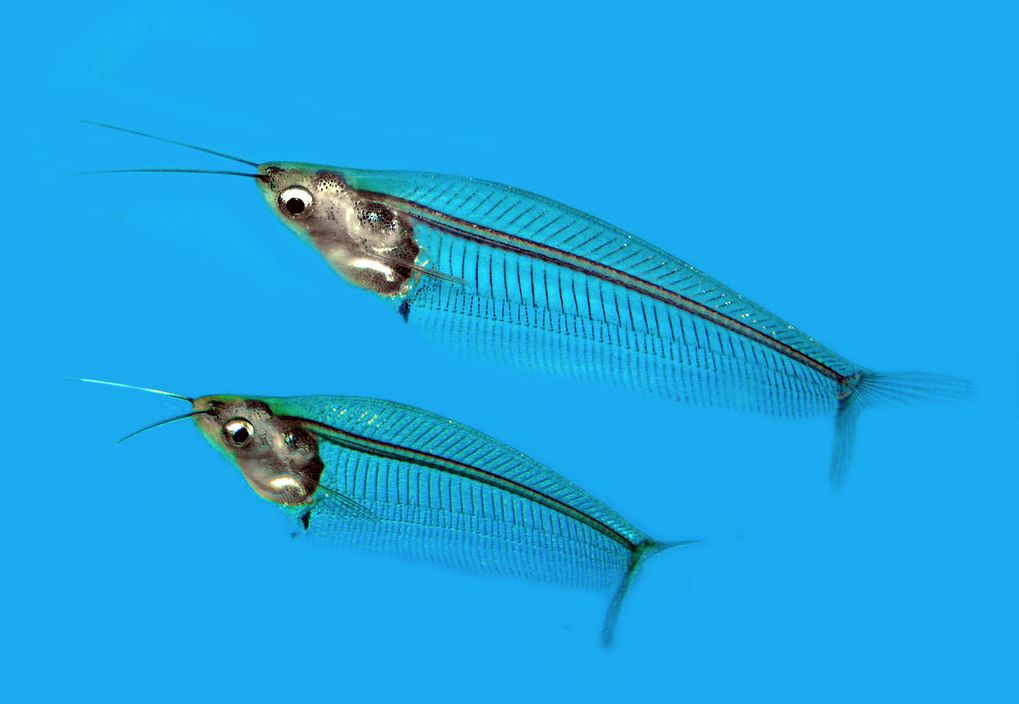
Contents
Habitat in the wild
The glass catfish, scientifically known as Kryptopterus spp., is a unique member of the Siluridae family, commonly called “sheatfish.” These captivating freshwater fish are native to Southeast Asia, found in countries like Thailand, Indonesia, Malaysia, and Cambodia.
Glass catfish thrive in slow-moving rivers, streams, and areas with dense vegetation, such as flooded regions. They prefer habitats with abundant hiding spots, including submerged tree roots, aquatic plants, and driftwood. These fish are often found in blackwater environments, where water is stained brown from tannins released by decaying organic matter.
In the wild, glass catfish typically occupy the lower to middle levels of the water column and are social creatures, often seen in groups or shoals. They are sensitive to fluctuations in water quality, particularly temperature and pH, requiring stable and well-maintained conditions to thrive. For aquarists, replicating their natural habitat involves ensuring soft, slightly acidic water and providing ample hiding spots to reduce stress.
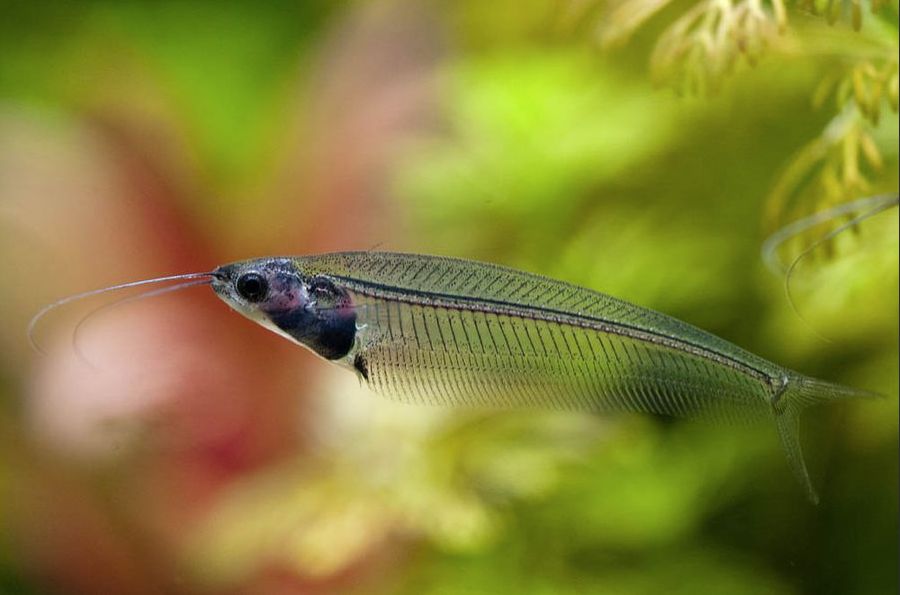
Description
The glass catfish, a fascinating species within the Kryptopterus genus, typically grows to a length of about 4 to 5 inches (10 to 12 centimeters). However, the size can vary slightly depending on the specific species and individual factors such as genetics, diet, and environmental conditions. In well-maintained aquariums, these fish can thrive and reach their maximum size.
In captivity, glass catfish generally live for around 3 to 5 years, but their lifespan can be influenced by the quality of care, diet, and water conditions. Providing optimal care can help maximize their lifespan, making it essential for aquarists to monitor water quality and maintain a stable environment.
One of the most striking features of glass catfish is their transparent or translucent body, which lacks pigmentation. This remarkable characteristic allows observers to see their skeleton and internal structures, giving them a ghostly appearance. The absence of scales contributes to this transparency, with their smooth skin further enhancing their ethereal look. In their natural habitats, this adaptation helps them evade predators by blending seamlessly into the muddy waters.
The glass catfish has relatively few melanophores, which are pigment-containing cells, resulting in light-colored, transparent muscles. Additionally, they contain guanine, a pigment that forms crystal plates in their cells. This substance acts like a mirror, reflecting light and helping them camouflage within their environment.
These catfish have long barbels on their upper lips, which serve as sensory organs to detect food and navigate their surroundings. Although they appear to lack a dorsal fin, a small fin is situated just behind the head. They also possess a long anal fin on the underside of their body, while their forked tail fin enhances their swimming ability.
| Characteristic | Description |
|---|---|
| Scientific Name | Kryptopterus spp. |
| Family | Siluridae |
| Common Names | Glass catfish, ghost catfish, phantom catfish |
| Native Region | Southeast Asia |
| Habitat | Freshwater rivers, streams, and flooded areas with vegetation |
| Appearance | Transparent body with visible internal organs and skeletal structure |
| Size | Typically grows up to 4-5 inches (10-12 centimeters) in length |
| Behavior | Shoaling species that prefers to be in groups |
| Diet | Omnivorous, feeding on small crustaceans, insects, worms, and plant matter |
| Water Conditions | Prefers soft, acidic water with temperatures between 75-82°F (24-28°C) |
| Aquarium Suitability | Requires a well-maintained aquarium with plenty of hiding spots and plants |
| Lifespan | Typically lives for 3-5 years in captivity |
| Special Considerations | Sensitive to water quality changes, requires regular water changes |
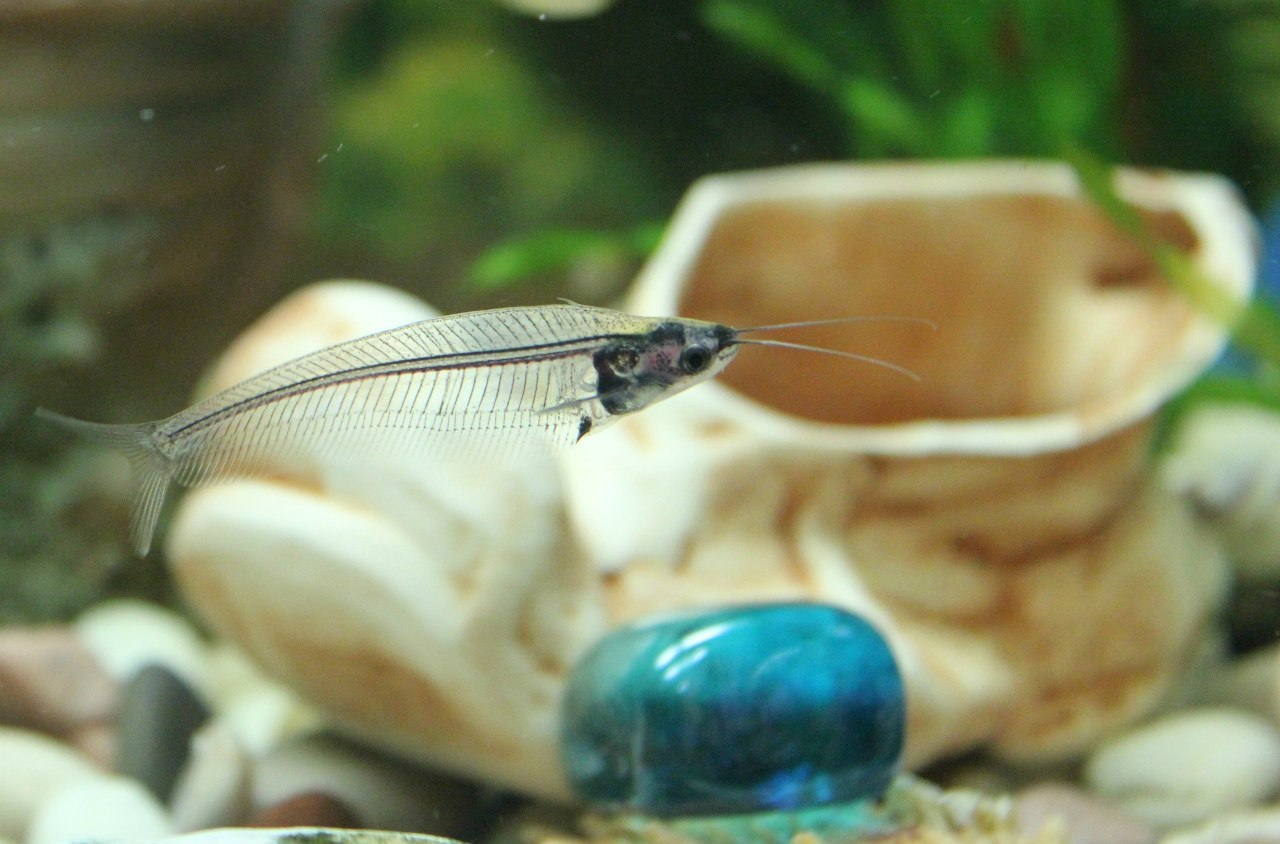
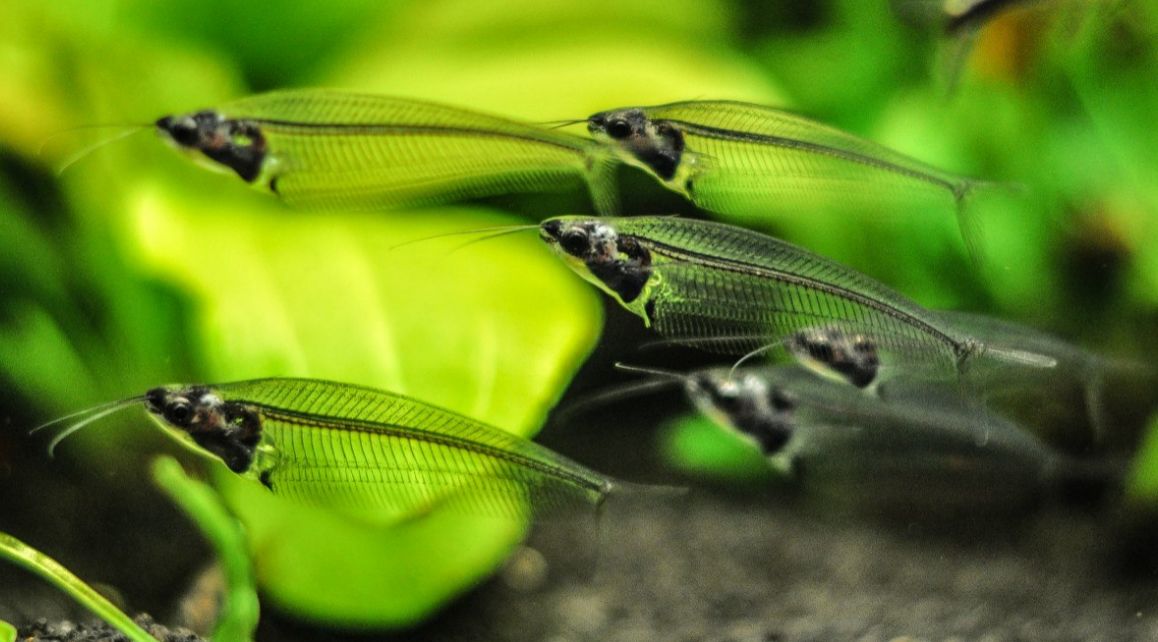
Difficulties in keeping
So, it becomes quite clear why this fish is called a glass one. Glass catfish are rather sensitive to their tank water parameters change and it should be put only into a settled tank with low nitrates level. Besides, the fish is rather timid and sensitive one, so it should be kept only in a school and with some peaceful tank mates.
Care is rather difficult since the fish is quite a demanding one, that can be recommended only to experienced aquarists. The fish hardly stands changes of tank water parameters, it is timid and prone to different diseases.
Care and keeping in a tank
Tank Size
When setting up a tank for glass catfish, it’s essential to consider their natural behavior and space requirements. Ideally, provide a tank that is at least 20 gallons (75 liters) for a small group of these fish. Larger tanks are always preferable, as they offer more swimming space and help maintain stable water parameters. If you plan to keep a larger shoal, be sure to increase the tank size accordingly to accommodate their social nature.
Tank Decor
To create an environment that simulates their natural habitat of slow-moving streams and rivers, incorporate plenty of live plants into the tank. Plants not only provide hiding spots but also contribute to water quality by absorbing nitrates and producing oxygen. It’s important to leave some open swimming space and ensure there is gentle water flow throughout the tank.
Adding floating plants can enhance the sense of security for the fish, creating shaded areas where they can rest. When first introduced to their new home, glass catfish may initially lie at the bottom of the tank. This behavior is often a sign of stress, so it’s essential to give them time to acclimate. To reduce stress levels during their introduction, consider placing them in an unlit tank for the first few hours.
Water Parameters
Glass catfish thrive in warm aquarium conditions, with a temperature range between 75°F (24°C) and 82°F (28°C). The tank water should never drop below 24°C, and abrupt temperature changes should be avoided to keep the fish healthy.
Aim for a slightly acidic to neutral pH, ideally between 6.5 and 7.5. Maintaining stable pH levels is crucial, as fluctuations can stress the fish. Glass catfish prefer moderately soft to moderately hard water, with a hardness level between 5 and 12 dGH (degrees General Hardness).
Monitoring ammonia and nitrate levels is vital, as these fish are sensitive to water purity. Regular water changes are necessary to keep nitrate levels below 20-30 ppm (parts per million). An efficient filtration system is essential to ensure clean water, and because glass catfish prefer subdued lighting, they are often more active in the shaded areas of the tank.
Diet
In the wild, glass catfish primarily consume small invertebrates, insects, larvae, and zooplankton. To mimic their natural diet in captivity, consider the following feeding guidelines:
- Natural Food: Glass catfish enjoy bloodworms, tubifex, white worms, and brine shrimp, which provide essential nutrients and closely resemble their natural prey.
- Commercial Options: They also readily accept high-quality commercial fish pellets or flakes formulated for omnivorous fish. Smaller-sized granules that slowly sink can be beneficial, as their small mouths require appropriately sized food.
Feed glass catfish small amounts two to three times a day. Because of their small mouths and stomachs, it’s crucial not to overfeed them. Offer only what they can consume within a few minutes to prevent excess food from sinking and fouling the water.
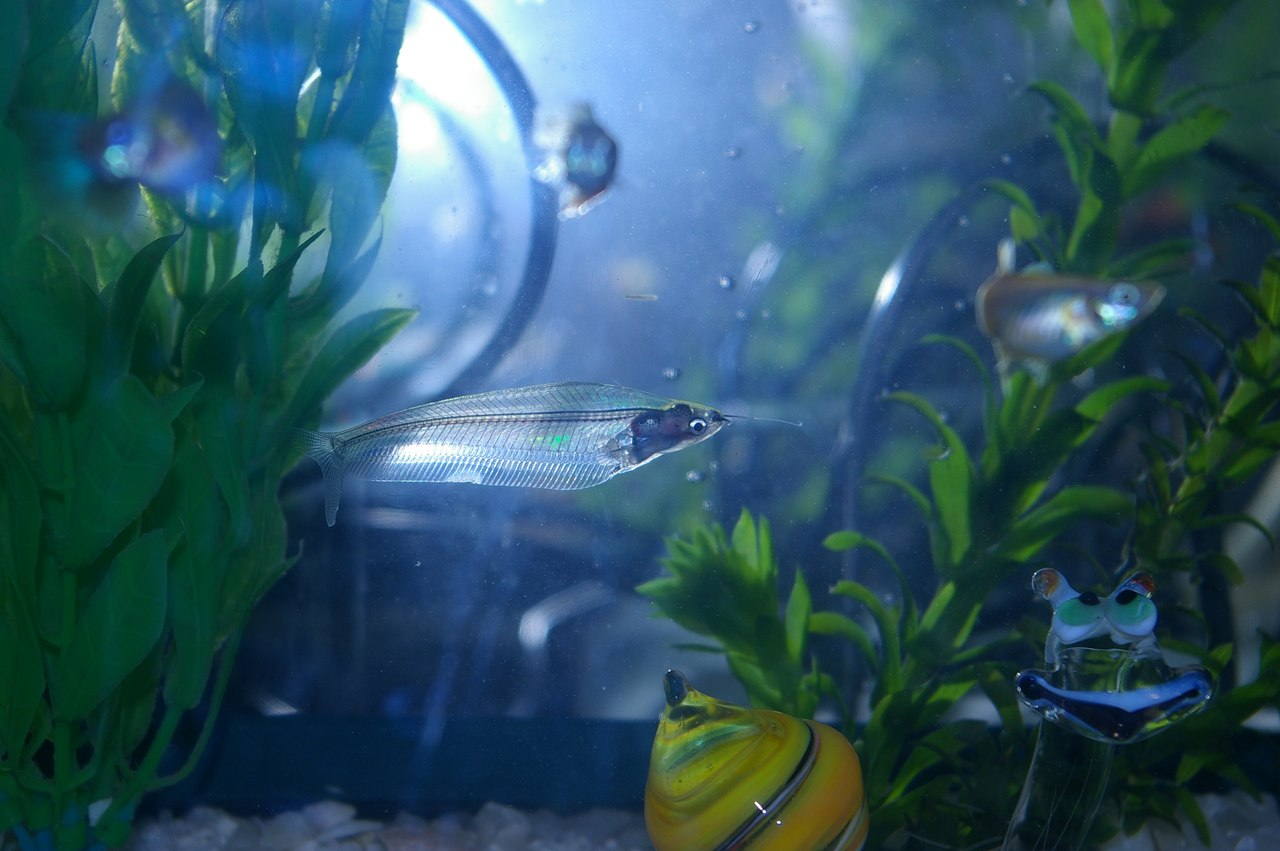
Tank mates
Is a peaceful and even timid fish. Glass catfish are social fish that prefer to be kept in groups or shoals. To ensure their well-being and reduce stress, it is recommended to keep them in groups of at least six individuals or more. A larger group will provide a more natural and comfortable social dynamic for them. The presence of companions can help reduce stress, promote natural behavior, and encourage better overall health. Glass catfish feel themselves much better and confident in a group of fish, they swim freely in the middle water layer and in the middle of the tank.
Glass catfish are generally peaceful and can be kept with a variety of tank mates. They feel more comfortable in the company of some calm fish of their size. Here are some suitable tank mates for glass catfish:
- Harlequin Rasboras (Trigonostigma heteromorpha)
- Neon Tetras (Paracheirodon innesi)
- Ember Tetras (Hyphessobrycon amandae)
- Glowlight Tetras (Hemigrammus erythrozonus)
- Black Neon Tetras (Hyphessobrycon herbertaxelrodi)
- Cardinal Tetras (Paracheirodon axelrodi)
- Rummy Nose Tetras (Hemigrammus rhodostomus)
- Dwarf Gouramis (Trichogaster lalius or Trichogaster chuna)
- Sparkling Gouramis (Trichopsis pumila)
- Celestial Pearl Danios (Danio margaritatus)
- White Cloud Mountain Minnows (Tanichthys albonubes)
- Dwarf Rasboras (Boraras spp.)
- Endler’s Livebearers (Poecilia wingei)
- Guppies (Poecilia reticulata)
- Platies (Xiphophorus spp.)
- Corydoras Catfish (Corydoras spp. – pygmy cory, panda cory, adolfoi catfish)
- Otocinclus Catfish (Otocinclus spp.)
- Bristlenose Plecos (Ancistrus spp.)
Gender Differences: Male vs Female
Distinguishing between male and female glass catfish can be challenging, as they exhibit minimal external sexual dimorphism. Unlike some fish species that display clear differences in size, coloration, or fin shape, glass catfish are quite similar in appearance.
Identification Challenges
Due to these physical similarities, determining the sex of a glass catfish without internal examination or observing breeding behavior can be difficult for most aquarium hobbyists. The most reliable way to identify gender is by observing breeding behavior, which includes the formation of pairs. During this time, the female’s abdomen may appear rounder when she is carrying eggs, providing a visual cue for identification.
Physical Characteristics
While there are no prominent external differences, some aquarists have noted that males may have slightly more elongated bodies, while females can appear fuller when ready to spawn. However, these distinctions are subtle and may vary among individual fish.
For most casual aquarium setups, differentiating between male and female glass catfish may not be necessary or easily achievable without expert assistance or knowledge.
Breeding
Information about breeding glass catfish in captivity is limited, and successful breeding events are rare. However, some aquaculture farms in the Far East have reported success. Breeding in the wild typically occurs during the rainy season, and simulating this environment can encourage spawning in captivity.
Breeding Simulation Steps
- Temperature Adjustment: Lower the water temperature to around 22-24°C (72-75°F). This mimics the cooler conditions often associated with seasonal changes in their natural habitat.
- Water Level Reduction: Decrease the water level to half of the tank’s total capacity, which simulates the flooding that occurs during rainy seasons.
- Water Addition: Each day, add soft water (5-10%) to mimic rainfall, ensuring that the water is free from chlorine and other harmful chemicals.
- Dietary Stimulation: Feed the glass catfish a large quantity of live food, such as brine shrimp or daphnia, to stimulate breeding behavior. This increase in protein can encourage females to develop eggs.
Once spawning occurs, the female will scatter several hundred eggs onto the tank plants. After the breeding process is complete, it is crucial to remove the parent fish from the tank to protect the eggs.
Juvenile Care
Simulating the rainy season helps the eggs to develop. For the juvenile fish, start feeding them with encapsulated brine shrimp, which provides the necessary nutrients for healthy growth. It’s also beneficial to introduce finely crushed flakes or specialized fry food as they grow.
Environmental Conditions for Fry
Maintain stable water parameters to ensure the survival of the fry. Regular monitoring of ammonia, nitrites, and nitrates is vital, as young fish are particularly sensitive to water quality. Keep the tank well-aerated and provide gentle water movement to mimic their natural environment.